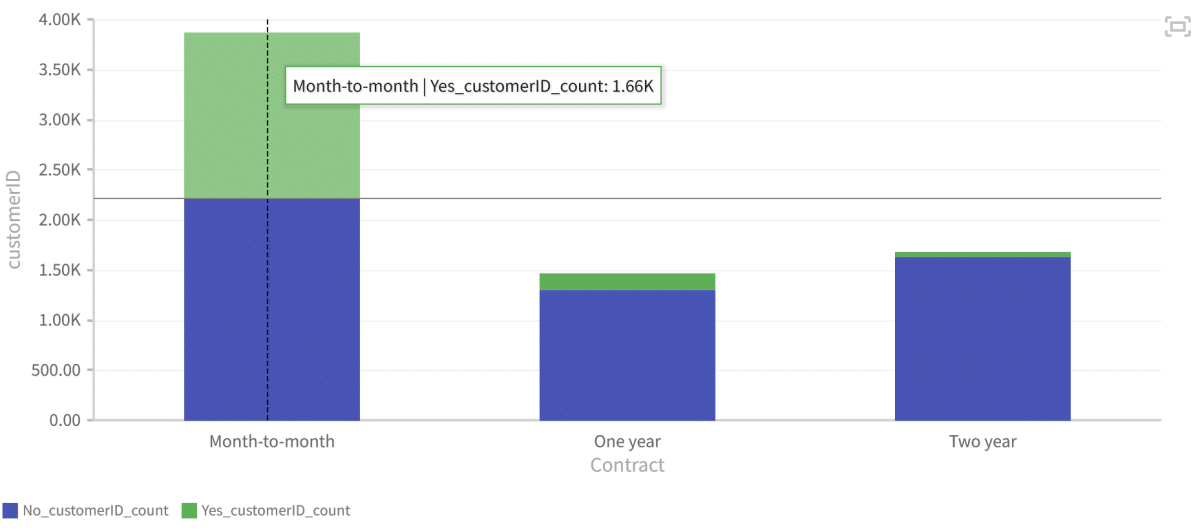Predicting Churn
Predicting churn is one of the most important tasks for your business. Businesses can use a variety of parameters to predict customer churn. We discuss two powerful churn prediction approaches you can use for your business. An effective churn prediction model can help you prevent customer churn, and focus on customer retention. Robust customer churn prediction models help you enhance your operations, spot customer churn trends, and understand your churn rate.
What Is Customer Churn?
Customer churn refers to the rate at which your customers cease to participate in your sales funnel or operational funnel. Customer churn can also relate to their exit points within a system or process, which may be involuntary customer churn. Customer churn rates are also known as customer turnover or customer attrition. Customer churn occurs when your customer stops using or engaging with your business’ product or service. There are other types of churn your business should understand;. These include: customer journey, revenue churn, product churn rates, and other types of customer churn analysis. The likelihood of a customer discontinuing using a brand’s product or service is termed as churn. While churn is an unavoidable part of the business lifecycle, keeping customer churn at its lowest possible percentage is essential. Doing so is as simple as identifying which stage of the customer experience journey attracts the most significant churn percentage. Spotting your customer pain points enables you to develop appropriate marketing and customer service strategies to help stop it from happening. For example, if a business identifies that unsatisfactory customer support is causing high customer attrition, simply training their customer success teams to provide a better experience can counter their high customer churn rate.
How Customer Churn Affects Your Businesses
“Executive teams that make extensive use of customer data analytics across all business decisions see a 126% profit improvement over companies that don’t.” – McKinsey.
A high customer churn rate can have a devastating effect on your business. Here’s why:
- Retaining an existing customer is five times cheaper than acquiring a new one.
- Businesses face a less than 20% likelihood of selling to a prospective customer than to an existing customer (70%).
- A slight 5% increase in your customer retention rate can increase your sales by a whopping 95%.
Machine learning empowers you to identify customer segments that you may not have noticed before. That’s where machine learning steps in.

How Machine Learning can help you Predict Churn
Machine learning can help you build a customer churn prediction model. Machine learning models can find patterns in data and learn from it, without explicit programming. In customer churn prediction models, the predictive model will observe behavior and characteristics. This helps you identify high customer churn points and analyze your high churn rates. You can identify churned customers. You can realign your marketing strategies to prevent a high customer churn rate. You can analyze customer behavior to assess your customer attrition rate. You can look at customer feedback to give you better insight into your customer interactions.
Predicting and Acting on Churn
You can spot the early warning signs of customer departures. You can assess your customer base, see what makes loyal customers, and improve your customer service. You can pinpoint your customer attrition rate and find out what builds customer loyalty. You can find out what causes involuntary churn. Your churn data will tell you more about poor customer experience. Your churn data can also help you enhance your customer relationships. Your churn reduction strategies can help you keep valuable customers. You can assess your current customers to see which ones are at risk customers. You can look at your customer lifetime value and customer acquisition costs. A customer churn model helps you enhance your customer satisfaction levels. You can also enhance your customer support services by using this data. You can analyze your voluntary churn, strategize to prevent a high churn rate, and assess your average churn rate. An effective customer churn model helps you assess your customer needs. That enables you to build better customer retention strategies. You can pinpoint and attend to poor customer service points. You can work to create a lower churn rate and ensure your customer needs are met. Using this data, you can build tailored customer retention strategies. You can also understand your customer acquisition cost and assess new subscribers. You can find where your marketing efforts work best, and where your marketing efforts don’t work well. Using exploratory data analysis, you can enhance your customer retention rates, improve your retention efforts, identify at risk accounts, and assess your customer engagement. You can also look into your product usage data, and gain valuable insights into all data points. Customer churn models help you identify high risk customers, your most active customers, and stem the flow of lost revenue. Machine learning can also help you to identify a huge additional potential revenue source, or find new ways to attract new customers.
Predicting Churn : Common Machine Learning Algorithms
These statistical techniques can be used in your machine learning model to predict customer churn.
Logistic Regression
Logistic regression finds the relationship between your sales data and what factors most likely influence the probability of an event happening. In this case, the event is whether or not a customer will churn. We call this a binary problem, where the answer will always be yes or no. To do this, they include multiple variables they know will affect the outcome. The variables are then clustered into groups. The model is then constructed on each group. The groups are then used to train the model with new data. This iterative process will repeat until the model reaches a point where it has been trained enough to predict whether or not a customer will churn. Using historical data, information on customer service interactions, and customer information, a model can build an effective churn model.
For example, take the case of a clothing store with data collected on this type of customer information:
- number of customers who have visited their website.
- the amount of money they have spent.
- and time spent inside the store for each day.

When this data was fed into a logistic regression, which can then consider additional parameters such as age, gender, income, number of visits to the website, and more to calculate the probability of the customer churning.
Random Forests
Random forests are used to model the effects of individual variables on a binary outcome. In this case, it would be customer churn. Random forests work in an entirely different way to logistic regression. Random forests are powered by decision trees, using one of the most commonly used machine learning techniques in data science. Decision trees are designed to learn how to react and make predictions based on new data when the outcome is binary. Unlike other decision trees, random forests are more complex and take more variables into account, making the model more accurate. The great thing about random forests is that businesses can predict customer churn using customer data, and classify or categorize customers based on their propensity to churn. That helps you create customer churn prevention models.
Take the example of a company that sells healthcare products and services with different data types on their customers, including:
- age.
- gender.
- income.
- and credit score.
A machine learning model may be able to predict whether or not a customer with a credit score of 650 is likely to churn, but it may have trouble predicting whether or not a customer will churn who is over the age of 50.
This problem can be solved by splitting the dataset into different categories such as ‘very likely to churn’ and ‘likely to churn.’ Each of these groups can be trained using logistic regression and random forests respectively – to make a more accurate prediction about each subset.
A No-code Machine Learning Solution
Machine learning can help you build highly effective customer churn models. But, without a team of data scientists, how can you use machine learning? That’s where a no-code machine learning solution can help. Consider a no-code machine learning platform like Graphite Note. With just a few mouse clicks, you can train your own machine learning model, predict churn, and get the results you need in minutes. Graphite Note simplifies the use of Machine Learning in analytics by helping business users to generate machine learning models without coding. Graphite Note gives you a single platform to build, visualize, and explain Machine Learning models for real-world business problems and use cases. You can explore all other Graphite Models here and learn about different machine learning use cases here. Request a demo and welcome machine learning models into your business.




